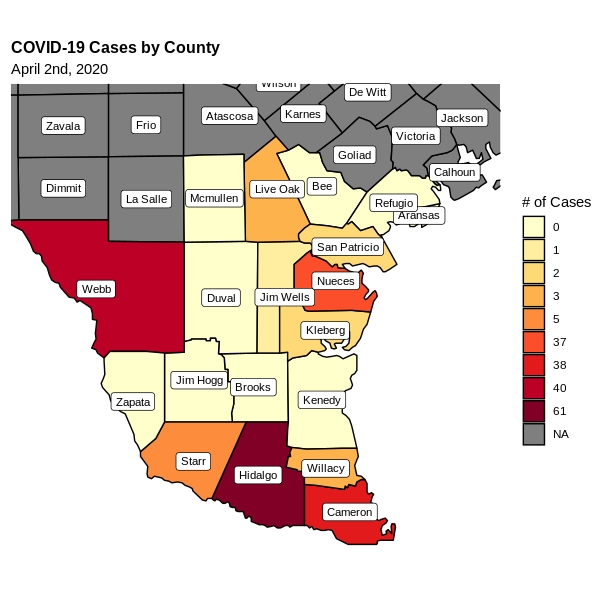Just one day after local officials announced that community spread of COVID-19 has begun in earnest in the Rio Grande Valley, state health officials added sobering news: the majority of people testing positive in the region are young, and the Valley’s cultural penchant for close interaction among extended family is making things worse.
“We’re also seeing an age distribution that is particular for our region … from the ages of 20-49, we have 60% of our cases,” said Dr. Emily Prot, regional medical director of the Texas Department of State Health Services’ Region 11 during a weekly conference call with media Friday morning.
Region 11 encompasses the 19 southernmost counties in Texas, from McMullen, Live Oak and Bee counties to the north, the counties of the Coastal Bend to the east, the ranchland counties in the center, Webb and Zapata counties to the west, and the Rio Grande Valley to the south.
Prot said that seeing so many young people afflicted by the disease is worrying, since people in that demographic are most likely to be active members of the workforce.
“It’s important for all of our businesses to have good, strict policies because we need to keep people that are sick at home, and not at work,” she said.
“So, no visiting tias, tios. No visiting the mother-in-law. That has to stop. We’re seeing too much spread right now within those family groups.”
–Dr. Emily Prot, Regional Medical Director, DSHS
As of Friday morning, the highest concentration of COVID-19 cases have been reported in Hidalgo, Webb, Cameron and Nueces counties, Prot said. Webb County has also reported five coronavirus-related deaths.
And as local health authorities have undertaken the painstaking process of investigating the movements of people who have tested positive — including who they may have had contact with in the weeks before their infections were confirmed — they have begun to notice something else particular to South Texas: strong family ties are exacerbating the virus’ spread.
“We have large households and these large households, they like to visit with other members of their family,” Prot said.
That needs to stop, she explained.
“We need to really avoid that and stay within one single household. So, no visiting tias, tios. No visiting the mother-in-law. That has to stop. We’re seeing too much spread right now within those family groups,” Prot said.
Prot hammered home the point, adding, “Those interactions are leading to more spread and we’re seeing that at a regional level.”
The Valley as a whole is at higher risk for seeing patients needing acute critical care, or who experience serious complications from the virus, Prot said.
“Well, we have more rates of diabetes in our region, and most of them (deaths caused by COVID-19) are due to older age, but we also had in Laredo, one of the deaths was in his 40s,” she said.
Prot said his death, as a young person with few underlying conditions, should “ring an alarm with all of us.”
Another worrying fact: the Valley’s four-county region, with its more than a million people, has a limited supply of ICU beds and ventilators available for those who will need the most critical care.
Over the past week, however, hospital systems throughout the region have worked to expand that capacity, in part by reducing the number of non-COVID-19 patients, said Dr. Elizabeth Cuevas, DSHS Region 11 Health Emergency Preparedness and Response manager.
“We’ve seen patient census across all hospitals decrease, and we have seen an increase in available ICU beds and ventilators,” Cuevas said.
However, medical officials expect more ventilators will be needed.
“There are still anticipated needs for more ventilators, but the best thing that the community can do is stay home, because if we prolong the severity right now, then there will be ventilators available for use as needed,” she said.
Prot emphasized another factor for why people need to heed shelter at home orders: even if the supply of physical medical supplies can be increased, the supply of physicians cannot.
“People that are not replaceable and that can’t be made are our physicians. And so our physicians are that front line,” Prot said. “We need to protect them, so we need to make sure that we’re staying home.”





